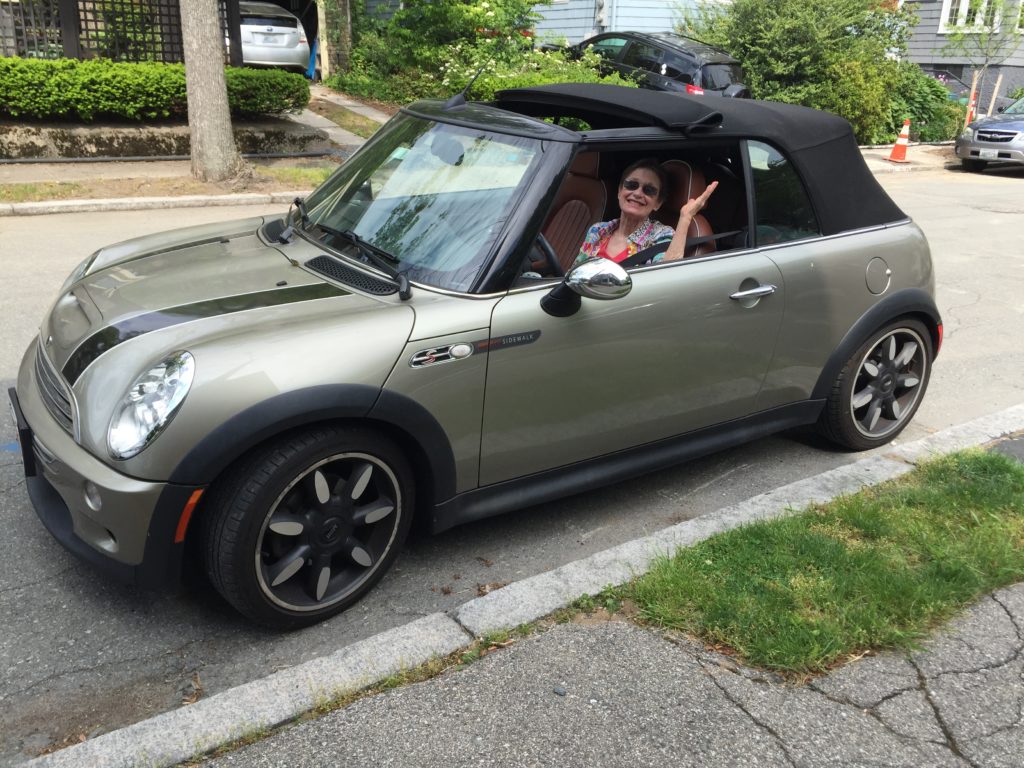by Emily Arnold McCully
One spring weekend four years ago, Lale and the friends she calls the Andrews Sisters gathered on the Brown campus for the 55th reunion of the Class of 1961, of which she is an honorary member.

When the formal festivities were over, four of us set out for the Diggs/McCully home in eastern New York State, a three-hour drive across Massachusetts. Lale had the latest of her zippy little cars, this one a spirited Mini convertible. I admired it, and Lale, always willing to share the treasures of a beautifully curated life, said, “Don’t you want to drive it?”
Turned out she meant drive it all the way home. I was tickled, but nervous. Lale wasn’t at all concerned about her baby. She settled into the passenger seat and launched into the story of her young life, much of it new to me. Much of it sounded painful, if highly entertaining, thanks to Lale’s astringent wit and a familiar cool distance that both insulates and frees her. When, at the end of the three hours, she said she was making it all into a book, I was enthusiastic. If she could write the way she talked, there was no limit to its appeal.
She could, and she did. This engrossing coming of age story might have been titled An Unsentimental Education. It spares no one, most especially its author and protagonist.
“Give me the child when she is seven, and I will give you the woman,” says filmmaker Michael Apted in his series Seven and Up. Lale’s life from seven on up was a clash of privilege and deprivation. The settings for her odyssey range from Upper East Side New York (cramped walk-up and luxurious apartments) to New Jersey hunt country, the Maine coast, Chicago, Providence, London, Paris, Vienna, Rome, Spoleto, Tel Aviv. Yearning for the love of her monumentally selfish parents, she forgave her father’s absences, rages, and betrayals (up to a point) and adopted her preoccupied mother (defanged) as a role model. Mostly, she faced the larger world alone, armed with an indomitable spirit, a powerful will, multiple talents, a sponge-like capacity to absorb, and, eventually, some sympathetic assistance from family connections and those she attracted by force of her personality. For the Andrews sisters, Lale was our urbane New York society girl given to Bohemianism, our collaborator in fun with her amusing affectations (mostly Britishisms), and her why-give-a-damn attitude.
Lale tells us of her decision to become an architect at an early age in order to measure up to her view of her parents’ expectations. Some hard times in the pursuit of this career have been weathered with grace. But because the book ends when Lale is in her mid-thirties the reader will have to visit her website to see how brilliantly she has executed her commissions.
Very much later in life, fate smiled on Lale, when she met and married John Bowers. But that is another story, and possibly another book. This one is about how Lale found herself.